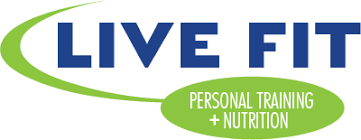Nutrition For Aging Well
GET ENOUGH FLUIDS
As you age, staying well hydrated can become more difficult. You may not feel thirsty as often as you once did. To be sure you are getting enough fluids, you can:
· Keep a beverage within arm’s reach
· If you don’t enjoy drinking water, try low fat or fat free milk, plant-based milk, 100% juice, or soup
· Limit beverages with added sugars and sodium
EAT A VARIETY OF FOODS
Eating a variety of foods can help to ensure you are getting enough nutrition. Focus on key nutrients, found in these nutrient-dense foods:
· Lean meats and fish
· Whole grains
· Low-fat dairy
· Fruits and vegetables
READ LABELS
Read nutrition labels to limit these nutrients that can have a negative impact on your health:
· Saturated fat
· Added sugars
· Sodium
Also check the labels for the appropriate serving size
EAT FOR YOUR TEETH
· Don’t skip fruits and vegetables because they are too hard to chew, try the canned or soft-cooked variety instead.
· If meats are difficult to chew, you can also try softer, canned meats such as tuna, or other naturally soft proteins, such as low-fat cottage cheese or eggs.1
USE SAFE FOOD PRACTICES
Becoming sick with a food-borne illness can be more devastating for an older person.
· Avoid high risk foods such as unpasteurized dairy, undercooked meat and eggs, and raw meat or seafood found in prepared foods such as some sushi.1
· Check expiration dates on items in your refrigerator
MAINTAIN A HEALTHY WEIGHT
· As we age, our muscle mass decreases and our body fat percentage increases. This lowers the energy, or calorie, requirement needed to maintain our body weight. The USDA outlines general calorie needs for those over 50:3
WOMEN
MEN
NOT PHYSICALLY ACTIVE
1,600
2,000-2,200
MODERATELY ACTIVE
1,800
2,200-2,400
HIGHLY ACTIVE
2,000-2,200
2,400-2,800
· Retirement, arthritis, and chronic illness contribute to the decrease in physical activity that often occurs as we age. To help balance calories taken in with those expended, aspire for 150 min/week of physical activity. This can be dancing, brisk walking, swimming, gardening, etc. Strength training can help with maintenance of muscle also.2
SHOP FOR YOUR BUDGET
If you are on a fixed income, you can still eat healthy!
· Canned fruits packed in water or juice and low-sodium canned vegetables can be just as healthy as the fresh versions, but less expensive.
· Buying store brands, shopping sales, and using coupons can help save money also.
· You can still buy in bulk, even if you are living in a small household. Buying in bulk saves money, and perishables bought in bulk can be frozen in single-portion servings at home.
Sources:
1. Senior Nutrition - Healthy Eating Tips & Resources. (2017, August 16). Retrieved February 27, 2018, from https://www.ncoa.org/economic-security/benefits/food-and-nutrition/senior-nutrition/
2. Healthy Eating. (n.d.). Retrieved February 27, 2018, from https://www.nia.nih.gov/health/healthy-eating
3. Older Individuals. (n.d.). Retrieved February 27, 2018, from https://www.nutrition.gov/subject/life-stages/seniors
